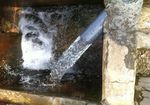Knowledge fuels change
For over a decade, Energypedia has shared free, reliable energy expertise with the world.
We’re now facing a serious funding gap.
Help keep this platform alive — your donation, big or small, truly matters!
Thank you for your support
Difference between revisions of "SPIS Safeguard Water"
***** (***** | *****) m |
***** (***** | *****) m |
||
| Line 44: | Line 44: | ||
<br/> | <br/> | ||
=== '''<span style="color:#879637;">Tools</span>'''<br/> === | === '''<span style="color:#879637;">Tools</span>'''<br/> === | ||
| − | *'''[[:File:SAFEGUARD WATER | + | *'''[[:File:SAFEGUARD WATER – Water Requirement Tool.xlsx|SAFEGUARD WATER – Water Requirement Tool]]''' |
| − | *'''[[:File:SAFEGUARD WATER | + | *'''[[:File:SAFEGUARD WATER – SPIS Water Resource Management Checklist.xlsx|SAFEGUARD WATER – SPIS Water Resource Management Checklist]]''' |
<br/> | <br/> | ||
{| style="width: 100%" cellspacing="1" cellpadding="1" border="0" | {| style="width: 100%" cellspacing="1" cellpadding="1" border="0" | ||
Revision as of 16:21, 21 September 2017

Module Aim and Orientation
The SAFEGUARD WATER module aims to give an introduction to groundwater management and the principles of sustainable water management. It further-more reviews the risks and impacts related to an overdraft of groundwater resources. This should sensitize the planner and the future user of a SPIS for a responsible and sustainable utilization of water sources in most cases to be shared with neighboring farmers or other users. Finally, this module provides a practical guideline for the integration of water management into the planning and operation of SPIS. read more
In the GET INFORMED module the individual components of an SPIS, as well as common system configurations are described. Each component has specific maintenance requirements. The service provider maintaining the SPIS also finds useful information on its promotion in the PROMOTE & INITIATE module. Further water-related aspects are described in the module IRRIGATION.
The FINANCE module gives an insight into financing SPIS components and configurations in different ways. The costs and efforts for maintaining the SPIS are also considered in the previous modules DESIGN and SET UP.
Population growth and higher living standards, the expansion of agricultural production into dry lands or marginal lands, and the impacts of climate change increase additional need for food, energy and water. The sound financial viability of Solar Powered Irrigation Systems (SPIS) may substitute conventional water extraction and pumping options to save energy and increase agricultural production. Governments and international development agencies support the implementation of SPIS because of several advantages:
- The use of renewable green energy is CO2-neutral and does not contribute to the emission of greenhouse gases and hence climate change;
- CO2-Certificates can be sold to fossil energy users;
- Decentral solar powered energy does not rely on energy networks infrastructure and regular fuel supplies which is interesting especially in less developed rural areas;
- Solar powered irrigation can enable agriculture in areas regarded not suitable or profitable and thus increase food production and food security.
However the previous significant financial hurdle for solar irrigated agriculture from low energy costs for diesel or electricity is diminishing. SPIS saves variable costs for energy production and therefore the incentive for water-efficient technologies and crop patterns is undermined. SPIS technology is on the rise while the abstraction of surface and groundwater for agricultural use around the globe increases and often exceeds the availability of renewable groundwater resources. In India, for example, about 30% of aquifers are considered at critical status[1]. Globally, non-renewable groundwater abstraction contributes nearly to 20% gross irrigation water demand[2]. In some cases, irrigated agriculture is even practiced through exploitation of fossil groundwater that is not renewable at all.
Hence, SPIS might cause or aggravate over-extraction of limited water resources with several side-effects for the environment, economy and society, such as:
- Unsecure water availability through drying wells and springs increase the risk of crop failure;
- Aquifer salinization and seawater intrusion with long-term implications for agricultural productivity;
- Increased risk of conflicts between different users (e.g. farmers, domestic water supplier, industrial users);
- Environmental impacts on groundwater-dependent ecosystems, such as drying up of wetlands and river base flows.
Irrigation requires the integration of principles of sustainable water management. Especially if groundwater regulation and protection in target countries is weak or even absent. Therefore, this module aims to sensitize SPIS developers about fundamental processes of groundwater use and regulation. Practicing sustainable groundwater use is in the self-interest of farmers and stakeholders of the solar powered agricultural development. That includes strict compliance to the mechanisms of water regulation and monitoring, as further detailed in the following chapters.
|
Water is one of the most vital natural re-sources for agriculture. Conservation, protection and sustainable use and management of water represents a global challenge of the 21st century. |
Chapters
1. Understanding groundwater
2. Analyze water management and regulation
3. Analyze water extraction
4. Explore cooperative water governance
5. Review potential risks and impacts
6. Adjust planning and operation
Tools
References




















